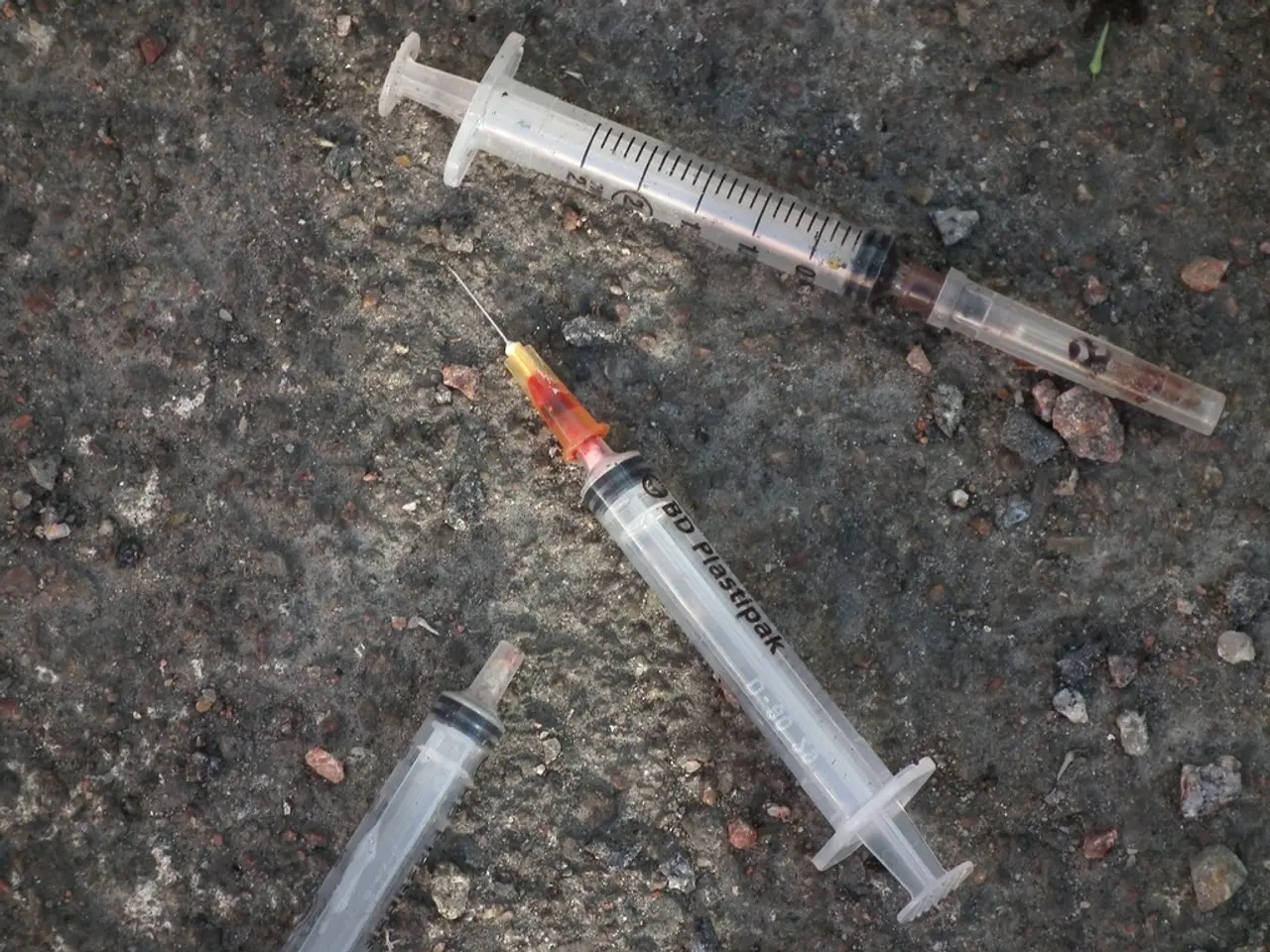Treatment for Bacterial Vaginosis
Bacterial Vaginosis (BV) is a common bacterial infection that affects many women, particularly those aged 15-44 years [1]. Understanding the risk factors and available tests can help women monitor their vaginal health and seek prompt treatment if necessary.
Identifying BV at Home
Several at-home tests are available to check for BV. These tests can help determine the pH level of the vagina, which can indicate the presence of BV. However, it's essential to note that these tests may not be 100% accurate, and false negatives are possible [2].
One such test is the Stix Vaginal Testing Kit, which comes with three UTI tests, three pH-balanced wipes, and two vaginal pH tests. The kit checks the pH of the urethra or the vagina, but does not check against strains of bacteria or provide an accurate diagnosis [3].
Other tests, like the FloriSense Vaginal Health Test and the myLAB Box BV Home Test, provide results in a matter of seconds or days. The FloriSense test checks the pH in a person's vagina to identify potential infections, while the myLAB Box test offers a free consultation with a doctor for those with a positive result [4].
Recognising Symptoms of BV
Symptoms of BV may include burning, pain, or itchiness in the vagina, thin white or gray vaginal discharge, itchiness around the outside of the vagina, a burning sensation when urinating, and a strong fishy odor, particularly following sexual intercourse [5].
Precautions and Limitations
While at-home tests can provide valuable information, it's crucial to remember that a positive result should always be followed by a visit to a healthcare professional. Some tests, like the LetsGetChecked Vaginitis Test, provide automatic access to medication if a person receives a positive result, but this is not suitable for all women, including pregnant women, those with symptoms of pelvic inflammatory disease, those who have had a procedure to the vaginal area resulting in scarring or damage, and those who cannot use a tampon due to a medical condition [6].
Risk Factors for BV
Several factors contribute to the development of BV. These include douching, having new or multiple sexual partners, using antibiotics, using an intrauterine device (IUD), especially the copper type, using perfumed vaginal products or soaps, smoking, and unprotected sexual intercourse with semen exposure [7].
Treatment and Prevention
The Centers for Disease Control and Prevention (CDC) recommends various treatments for BV, including oral metronidazole, metronidazole gel, or clindamycin cream as first-line treatment options [8]. Other treatments, such as tinidazole and secnidazole, are also available as alternatives [9].
Regular monitoring of vaginal pH levels can help prevent BV. One way to do this is by using pH test strips, such as the MedLab Diagnostics Vaginal pH Test Strips, which are available for purchase online [10].
In conclusion, at-home BV tests can provide valuable insights into a person's vaginal health. However, a positive result should always be followed by a visit to a healthcare professional for accurate diagnosis and treatment. By understanding the risk factors and available tests, women can take proactive steps to maintain their vaginal health.
[1] Centers for Disease Control and Prevention. (2021). Bacterial vaginosis. Retrieved from https://www.cdc.gov/std/bv/stdfact-bacterial-vaginosis.htm [2] Let's Get Checked. (2021). Let's Get Checked Vaginitis Test Review. Retrieved from https://www.letzgetchecked.com/blog/lets-get-checked-vaginitis-test-review/ [3] MedLab Diagnostics. (2021). Vaginal pH Test Strips. Retrieved from https://www.medlabdiagnostics.com/product/vaginal-ph-test-strips/ [4] myLAB Box. (2021). BV Home Test. Retrieved from https://www.mylabbox.com/bv-test/ [5] Mayo Clinic. (2021). Bacterial vaginosis. Retrieved from https://www.mayoclinic.org/diseases-conditions/bacterial-vaginosis/symptoms-causes/syc-20352171 [6] Let's Get Checked. (2021). Let's Get Checked Vaginitis Test. Retrieved from https://www.letzgetchecked.com/products/vaginitis-test/ [7] American College of Obstetricians and Gynecologists. (2020). Bacterial vaginosis. Retrieved from https://www.acog.org/womens-health/faqs/bacterial-vaginosis [8] Centers for Disease Control and Prevention. (2021). Treatment for Bacterial Vaginosis. Retrieved from https://www.cdc.gov/std/bv/treatment.htm [9] Centers for Disease Control and Prevention. (2021). Non-prescription treatments for Bacterial Vaginosis. Retrieved from https://www.cdc.gov/std/bv/non-prescription-treatments.htm [10] MedLab Diagnostics. (2021). Vaginal pH Test Strips. Retrieved from https://www.medlabdiagnostics.com/product/vaginal-ph-test-strips/
- Concerned individuals can maintain their mental health by understanding the importance of regular screening for infectious conditions like Bacterial Vaginosis (BV).
- The field of science has made significant strides in the health-and-wellness sector, developing tests that detect vaginal infections like BV at home.
- Skin care isn't the only aspect of women's health that demands attention; understanding the risk factors and available tests is crucial for monitoring sexual health and mental well-being.
- Some at-home tests for BV, such as the Stix Vaginal Testing Kit and the MedLab Diagnostics Vaginal pH Test Strips, offer an easy, convenient way to check vaginal pH levels.
- Home tests like the FloriSense Vaginal Health Test and the myLAB Box BV Home Test provide a quick and efficient method for identifying potential other vaginal infections or signs of BV.




